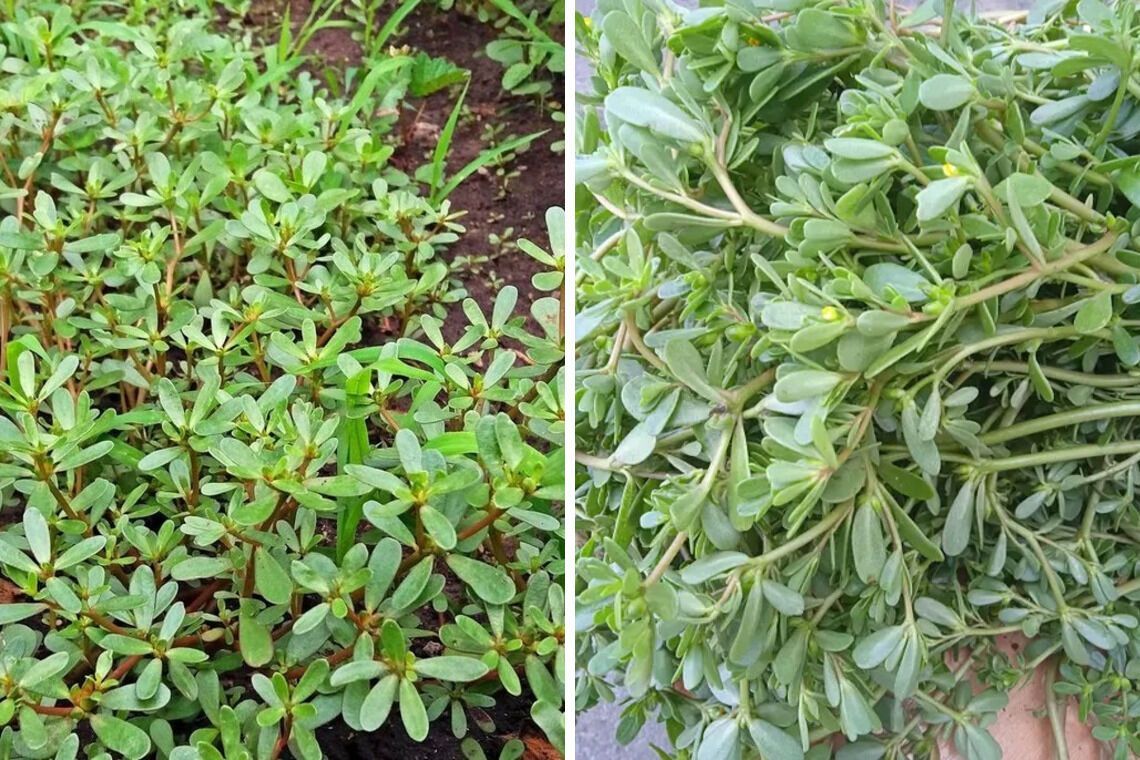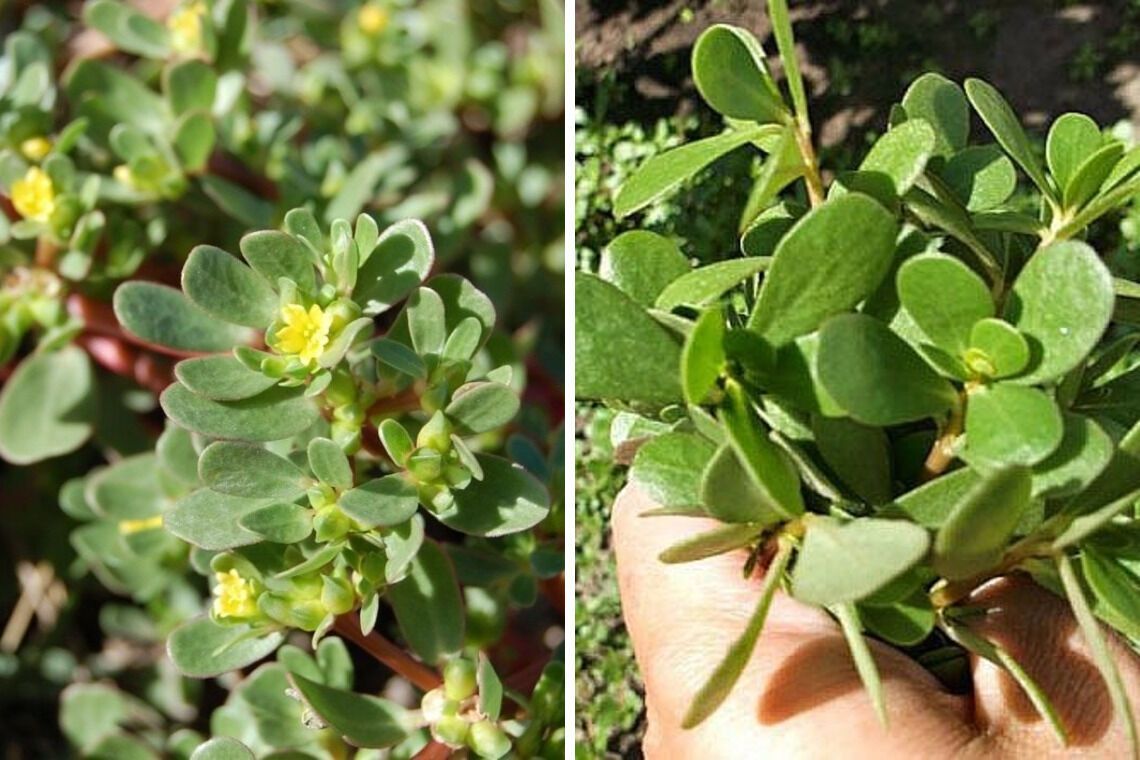What weeds should not be pulled in the garden: what are the benefits of purslane and what is prepared from it

Purslane can often be found in the garden or vegetable garden, growing along the ground without taking root. People usually get rid of it without knowing that it can be eaten.
For example, this common garden plant is included in diet menus for weight loss because it has a low calorie content and a high concentration of vitamins (it has only 16 kcal per 100 g). Purslane is also used in folk medicine and for cosmetic purposes.

Read also: For a healthy breakfast: how to make potato, chickpea and feta deruns
Purslane properties:
- diuretic effect;
- promotes regeneration;
- antioxidant effect;
- vasodilator and immunomodulatory function;
- has sedative properties;
- as an anthelmintic and antibacterial agent.
Purslane leaves contain carbohydrates and proteins, natural sugars and acids, alkaloids, saponins, and glycosides. Purslane leaves are also rich in zinc, iron, calcium, copper, vitamins A, C, and PP.
According to Nealthapple.info, purslane can lower blood sugar, and purslane tincture lotions are used for neurodermatitis or psoriasis.
Infusions and decoctions from this plant are used for cystitis (as an anti-inflammatory agent), to rinse eyes for conjunctivitis, and to rinse the mouth for bleeding gums.
Purslane can also be used for high blood pressure, insomnia, and irritability.
Purslane infusions help to get rid of worm infestation.
Since purslane has an anti-inflammatory effect, its crushed leaves can be used to lubricate skin irritations and insect bites.

Read also: A weed that must not be thrown away: why you should use chickweed in your salad
How to use purslane
Purslane (leaves or seeds) are used to make tinctures and decoctions. The leaves of this plant are used in salads, omelets, and added to various dishes. If there are no contraindications, garden purslane can be consumed without restrictions.
Who should not eat purslane
- in case of chronic kidney and liver diseases;
- women during lactation;
- in case of arrhythmia;
- in case of low blood pressure; in case of high hemoglobin;
- in case of epilepsy and severe nervous disorders.
How to make a delicious salad with purslane:
- Garden purslane, leaves - 200 grams
- Tomato - 1 pc.
- Cheese or feta - 100 grams
- Pitted olives - 100 grams (can be replaced with fresh cucumber)
For the dressing, you will need 2 tablespoons of oil, a tablespoon of lemon juice, and a teaspoon of mustard (with seeds).
- Wash and dry the purslane leaves and put them in a deep bowl. Add the tomato slices, chopped cheese (or feta), and chopped olives.
- In a small bowl, mix the oil, lemon juice, and mustard. After you have flavored the salad, you can serve it.
We also offer a recipe for a chickpea salad that is suitable for vegans and vegetarians.
If you want to get the latest news about the war and events in Ukraine, subscribe to our Telegram channel!
